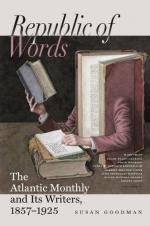The volume which we have marked III. is the fifth revised edition of the “Botanical Text-Book.” It contains a complete, although concise, sketch of Structural Botany and Vegetable Physiology, and a birds’-eye view of the whole vegetable kingdom in its subdivision into families, illustrated by over thirteen hundred engravings on wood. It has become a standard of botany, wherever our language is read.
For those who do not wish to pursue the study so far, the “First Lessons” is one of the most happily arranged and happily written scientific text-books ever published, and is illustrated by three hundred and sixty well-executed wood-cuts. This takes scholars of thirteen or fourteen years of age far enough into the recesses of the science for them to see its beauties, and to learn the passwords which shall admit them to all its hidden and inexhaustible treasures. It goes over substantially the same ground that is covered by the volume we have marked III., but in simpler language and with much less detail; and closes with clear practical directions how to collect specimens and make an herbarium.
The first book is intended for children of ten or twelve years old, at home or in school. We hail it as a remarkably successful effort of a truly learned man to write a book actually adapted to young children. While all teachers, and writers upon education, insist on the importance of having a child’s first impressions such as shall not need to be afterwards corrected, and such as shall attract the child towards the study to which it is introduced, our elementary books have usually sinned in one or both these points. They are either dry and repulsive, or else vague and incorrect;—frequently have both faults. But the child is here told “how plants grow” in a very pleasant manner, with neat and pretty pictures to illustrate the words, by one whose thorough knowledge and perspicuity of style prevent him from ever giving a wrong impression. The “Popular Flora”




